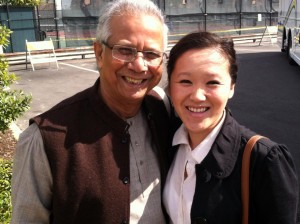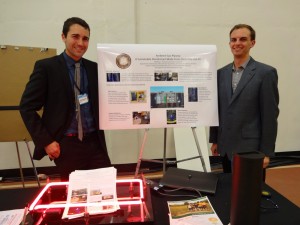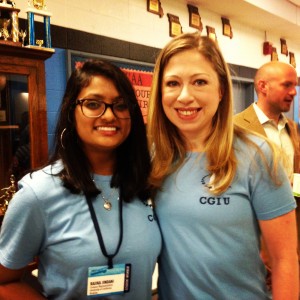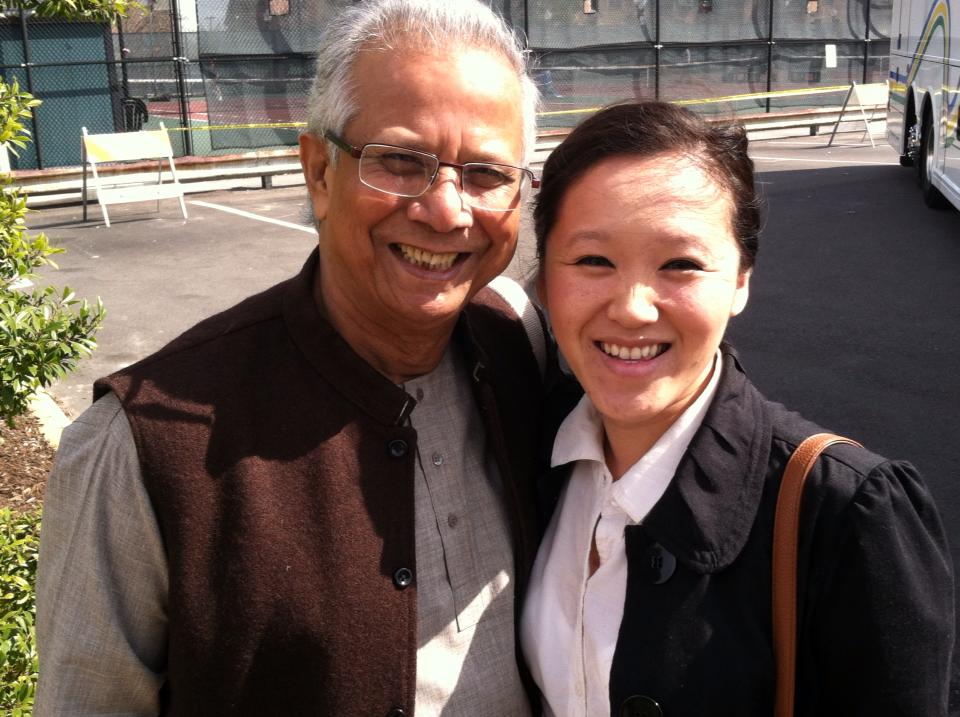By: Javier Kordi

In early April, eighteen UC Berkeley students attended the Clinton Global Initiative University (CGI-U) conference in St. Louis, Missouri, eager to make progress on their “commitments to action”—student-led projects which aim to tackle the most pressing challenges facing humanity. With $500,000 available for investment in student projects—in addition to funds and support from the institutions in the University Network—and an all-star line-up of keynote speakers, this year’s event provided an unprecedented atmosphere of collaboration, innovation, and networking.
Ngan Pham, a student in the Global Poverty and Practice (GPP) Minor, described CGI-U as refreshing because it brought together a “group of ambitious and humble individuals” all aspiring to create a positive change. Pham’s project, “ServeFund,” prepares low-income students to be competitive and financially eligible for internships and public service opportunities—experiences that employers value highly in today’s job market. Because CGI-U brings together prominent public figures and private sector leaders, student attendees are often able to network with their idols. Pham recalls one serendipitous morning at CGI-U when she met and exchanged contact information with Professor Mohammad Yunus, an economist and Nobel Peace Prize recipient specializing in microfinance.
CGI-U supports a diverse spectrum of student commitments, from social service projects to science-driven solutions to local and global challenges. The conference gave Connor Galleher and Matt Pavlovich an opportunity to unveil their first venture in global poverty alleviation. Utilizing their knowledge of plasma physics and chemical engineering, the duo constructed a device that generates plasma as an affordable and low-input sanitation agent for water and surfaces. Requiring only electricity and air, their device has immense potential to curb infection and disease when used in developing countries. Galleher and Pavlovich were one of two teams to present on-stage in the “Solving the Global Sanitation Crisis” session.

Pavlovich emphasized how easily it was to build partnerships with other attendees. The eerie glow of their prototype on display attracted many at CGI-U, including Stephen Colbert, who described the event as “a science fair for noble causes.” Even CGI-U host President Bill Clinton casually walked over to their booth, and—after listening to their pitch—picked up their business cards and mentioned the possibility of providing solar panels for their power needs.
Beyond networking, Galleher and Pavlovich’s exposure in the CGI-U space encouraged the team to rethink the way they presented and marketed their idea. Galleher recalled that “people were in pain when reading our [poster]” because few attendees were familiar with the language of plasma physics. The project team was compelled to “recalibrate [their] message” in order to make it more accessible. They now have a website and a pending project title—“PlasMachine”—that they hope will make the seemingly esoteric topic more understandable and accessible for the general population.
Karem Herrera, also a GPP student, described the three day CGI-U conference as “empowering” because it spoke to all aspects of the poverty challenge—including the inevitable failures and obstacles that aspiring change-makers encounter—and provided opportunities for collaboration. Herrera’s commitment is to organize a youth empowerment program in Aguascalientes, Mexico. Working with a team of approximately fifteen UC Berkeley students through MEND (an on-campus organization), her program will extend educational resources to economically disadvantaged youths in Aguascalientes. During the event, she met the directors of a similar project, Union De Jovenes Por Mexico (Union of Youth for Mexico), and may work closely with the group in the near-future.

Sean Burns, Director of Student Programs at the Blum Center, feels the conference offered an important experience for UC Berkeley students on a number of levels. “Students were able to analyze the vision and strategy of their projects,” he remarked. “They were able to meet and converse with dozens of experienced leaders in social change and innovation, and return to campus with a bolstered sense of enthusiasm and confidence for carrying forth their project commitments.” Burns, who serves as the UC Berkeley campus representative in the inaugural year of the CGI-U University Network, looks forward to continuing to work with these students as they seek to fulfill their commitments to action.
Read more about the Blum Center’s role in the CGI-U University Network.

